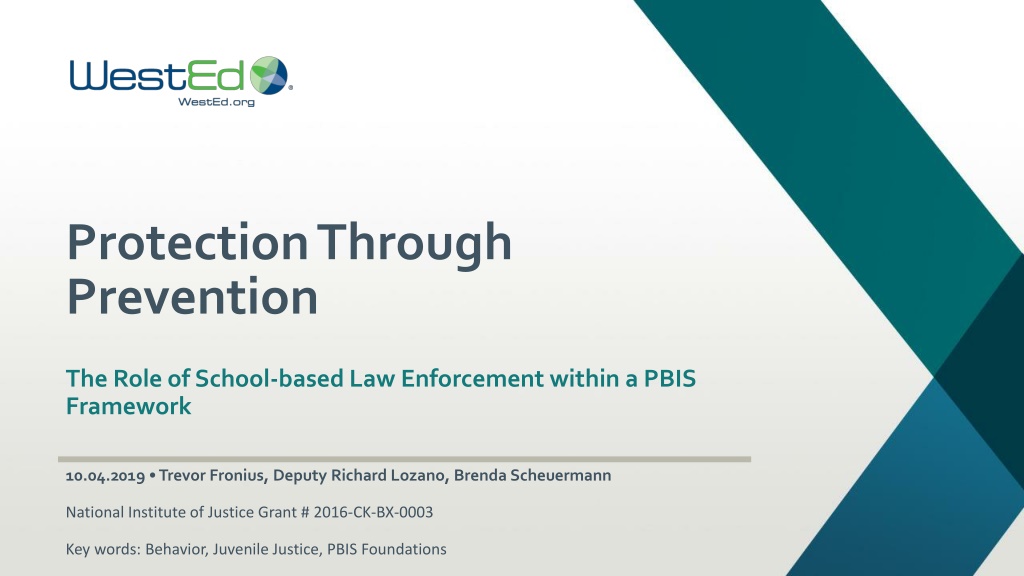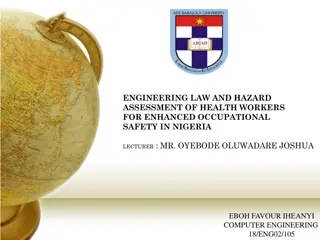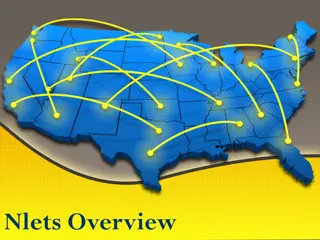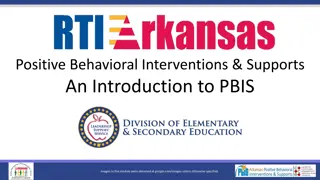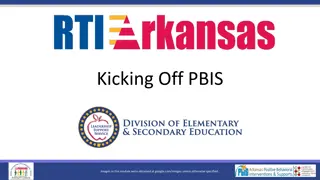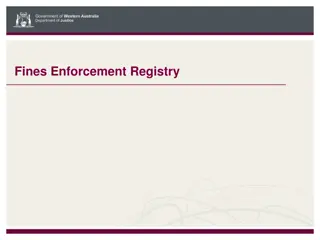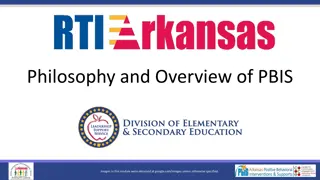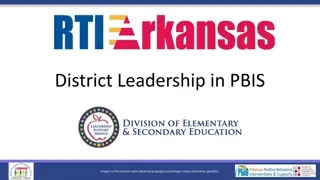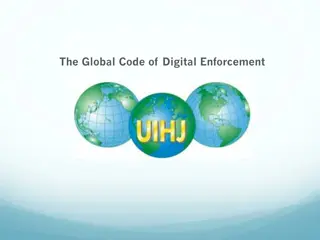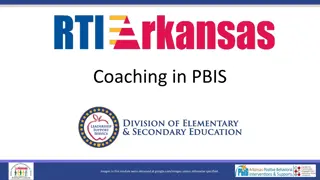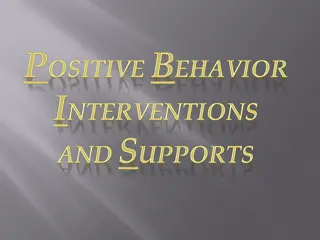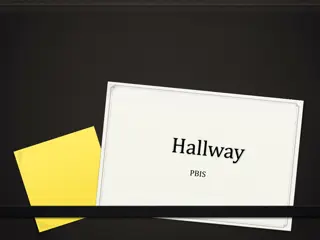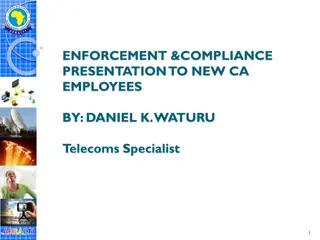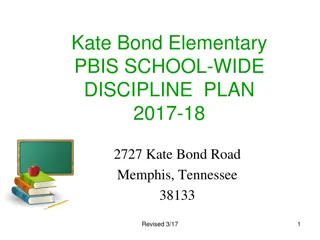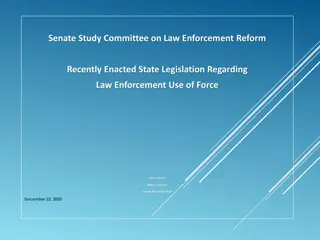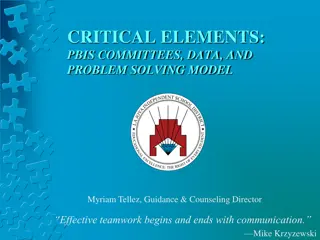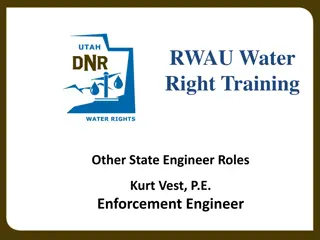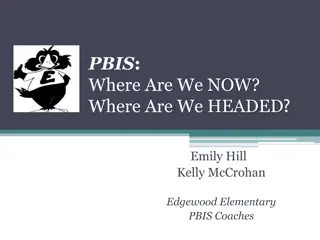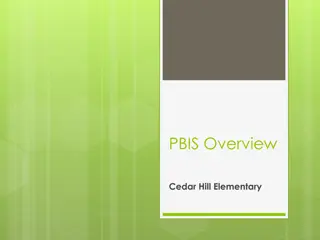School-based Law Enforcement in PBIS Framework
This presentation discusses the implementation of school-based law enforcement within a PBIS framework to enhance prevention and support for students' academic, social, emotional, and behavioral needs. It focuses on a study in Texas involving middle and high schools, exploring the role of trained police officers in maintaining school safety and supporting students. The project aims to gather data on school climate, safety, and student experiences to improve school policing practices.
Uploaded on Oct 01, 2024 | 0 Views
Download Presentation

Please find below an Image/Link to download the presentation.
The content on the website is provided AS IS for your information and personal use only. It may not be sold, licensed, or shared on other websites without obtaining consent from the author. Download presentation by click this link. If you encounter any issues during the download, it is possible that the publisher has removed the file from their server.
E N D
Presentation Transcript
Protection Through Prevention The Role of School-based Law Enforcement within a PBIS Framework 10.04.2019 Trevor Fronius, Deputy Richard Lozano, Brenda Scheuermann National Institute of Justice Grant # 2016-CK-BX-0003 Key words: Behavior, Juvenile Justice, PBIS Foundations
Overview of PBIS Implementation framework for maximizing the selection and use of evidence-based prevention and intervention practices along a multi- tiered continuum that supports the academic, social, emotional, and behavioral competence of all students. Data PBIS Elements Systems Outcomes Practices 2
Overview of PBIS 5% Tertiary Intensive & individualized supports PBIS functions along a continuum of preventive practices to support all students and staff according to individual needs and local context of the school and community. Tier 3 15% of students Secondary Prevention Targeted, individual & group-based support Tier 2 All students Universal practices for students & staff Tier 1 3
PBIS Stakeholder Groups Classroom Staff Students are supported by a diverse network of stakeholders in and out of school. Each have a vested interest in supporting the academic, social, emotional, and behavioral needs of students. School-based law enforcement are uniquely situated to provide such support. Community PBIS Team Students Student Support Staff Parents School & District Admin 4
Background: SBLE Study in Texas Rigorous study of a comprehensive, research-based implementation framework for school policing 25 middle and high schools in Central Texas WestEd is gathering data on school climate, school safety, and the experiences of students and school-based law enforcement over the course of the study. Study Partners: Texas State University Texas State School Safety Center WestEd Comal, Dripping Springs, Hays, Lockhart, San Marcos, Wimberley School Districts This research project receives support from the U.S. Department of Justice, National Institute of Justice (Award 2016-CK-BK-003). This presentation solely reflects the views of the research team at WestEd. 5
What is school-based law enforcement? The term school-based law enforcement (SBLE) refers to any number of situations in which one or more trained police officers work full-time or part-time on school property. Common types include: School resource officer (SRO) - Local police department assigns one or more municipal police who devote their time to maintaining a presence on school property. School district police - School districts establish their own police departments. All are sworn officers who carry firearms, have arrest powers, and carry a police department badge. As of 2017, 48% of schools (>70% of students) have SBLE(s) on campus 6
Roles of Law Enforcement in Schools The Triad Model: Law Enforcement Officer Keep the peace Educator Transfer knowledge to students and staff Informal Counselor Provide guidance and act as a link to resources and other supports Serve as a positive role model Law Enforcement Officer Informal Counselor Educator 7
Roles of Law Enforcement in Schools Officers view themselves as more than enforcement in the majority of encounters Educator Officer / Educator All three Counselor Officer Officer / Counselor 0.0% 5.0% 10.0% 15.0% 20.0% 25.0% 30.0% 35.0% 40.0% 8
School-based Law Enforcement & PBIS PBIS Expands the role of SBLEs and supports the triad model Activates the SBLE as stakeholder and community member within the school Provides a framework for the SBLE to situate preventive strategies and practices in school. Universal (Tier 1) Secondary (Tier 2) Tertiary (Tier 3) 9
Roles within Encounter Types Proactive Encounters Instructional Prevention Disciplinary 0% 10% 20% 30% 40% 50% 60% 70% 80% 90% 100% Officer Counselor Educator Officer / Counselor Officer / Educator Counselor/Educator All three 10
Tier 1 Primary Prevention Universal practices include: Reinforcing positive behavioral expectations Establishing rapport with students Leading classroom presentations with students and staff Incorporating SBLEs at Tier I establishes the officer as an active member in the school s prosocial community. All students Universal practices for students & staff Tier 1 11
SBLE within Tier 1 Positive and Proactive Support Proactive Prevention Instructional Disciplinary Informal greeting (n=357) 86.0% 14.3% 10.4% 5.3% Class visit or presentation (n=153) 86.3% 7.2% 88.2% 2.6% Hallway greeting (n=145) 91.7% 4.1% 3.4% 2.1% Lunch with students (n=31) 90.3% 19.4% 0.0% 3.2% 12
SBLE within Tier 1 Examples from Texas Called admin Informally counseled Had a conversation Investigated further Issued ticket Arrested individual Informal greeting (n=357) 6.5% 22.6% 83.9% 3.2% 0.0% 3.2% Class visit or presentation (n=153) 4.8% 7.6% 57.9% 4.1% 0.0% 0.7% Hallway greeting (n=145) 1.3% 58.2% 92.2% 2.6% 0.0% 0.0% Lunch with students (n=31) 4.5% 13.2% 78.4% 2.8% 0.3% 0.3% 13
SBLE within Tier 1 Exemplar Spotlight Stories from the field
Tier 2 Secondary Prevention Secondary supports: Address behavioral needs not met through Tier 1 practices More intensive and targeted toward students at risk for chronic behavioral needs. May be led by instructional staff or student support staff. Are individualized based on the needs of the student(s) SBLEs at Tier 2 may: Refer students for additional supports Participate in call out groups 15% of students Secondary Prevention Targeted, individual & group-based support Tier 2 15
SBLE within Tier 2 Student Behavioral Health Support Prevention Disciplinary Proactive Instructional Check in on prior issue (n=95) 85.3% 23.2% 6.3% 11.6% Upset student (n=91) 39.6% 53.8% 22.0% 6.3% Requested well-being check (n=31) 48.4% 64.5% 22.6% 13.0% Mental health issue (n=23) 60.9% 43.5% 4.3% 13.0% 16
SBLE within Tier 2 Student Behavioral Health Support Called admin Informally counseled Had a conversation Investigated further Issued ticket Arrested individual Check in on prior issue (n=95) 5.3% 22.1% 83.2% 12.6% 0.0% 3.2% Upset student (n=91) 26.4% 34.1% 58.2% 14.3% 1.1% 3.2% Requested well-being check (n=31) 35.5% 19.4% 48.4% 48.4% 0.0% 0.7% Mental health issue (n=23) 6.5% 29.0% 16.1% 0.0% 0.0% 35.5% 17
SBLE within Tier 2 Exemplar Spotlight Stories from the field
Tier 3 Tertiary Prevention Tertiary supports: Are organized to reduce the frequency and intensity of problem behaviors Address behaviors that are dangerous, disruptive, or otherwise impede learning. Are individualized based on the needs of the student, and Include a network of student stakeholders SBLEs at Tier 3 may: Seek out or refer to additional outside supports for students (e.g., MH, CPS) Provide de-escalation support Disrupt referrals to juvenile justice system 5% of students Intensive & highly individualized Tier 3 19
SBLE within Tier 3 Student Problem Behaviors Proactive Prevention Instructional Disciplinary Substance-related (n=61) 32.8% 39.3% 31.1% 44.3% Bullying (n=27) 44. 33.3% 25.9% 40.7% Classroom Disruption (n=27) 48.1% 51.9% 40.7% 29.6% Fight (n=27) 29.6% 37.0% 25.9% 51.9% Suspicious Activity (n=17) 25.0% 62.5% 25.0% 25.0% Sexual (n=9) 55.6% 22.2% 11.1% 22.2% 20
SBLE within Tier 3 Student Problem Behaviors Called admin Informally counseled Had a conversation Investigated further Issued ticket Arrested individual Substance-related (n=36) 21.3% 21.3% 50.8% 16.4% 4.9% 13.1% Bullying (n=27) 22.2% 51.9% 59.3% 14.8% 7.4% 3.7% Classroom Disruption (n=27) 18.5% 44.4% 70.4% 7.4% 0.0% 0.0% Fight (n=27) 22.2% 33.3% 51.9% 29.6% 3.7% 14.8% Disrectionary Behavior (n=24) 20.8% 41.7% 58.3% 8.3% 4.2% 0.0% Suspicious Activity (n=17) 29.4% 29.4% 41.2% 23.5% 5.9% 0.0% Sexual (n=9) 77.8% 0.0% 22.2% 22.2% 11.1% 0.0% 21
SBLE within Tier 3 Exemplar Spotlight Stories from the field
Prevention Takes TimeBut not Too Much. Proactive efforts can be short, but meaningful Proactive Prevention Instructional Disciplinary Less than 1 Minute (n=116) 89.7% 4.3% 5.2% 0.0% Prevention takes more time depending on the situation Effective prevention reduces need for discipline Time can be redistributed to additional proactive efforts 1-5 Minutes (n=289) 81.6% 11.1% 7.3% 6.3% 6-10 Minutes (n=144) 73.6% 22.2% 38.2% 9.0% 11-20 Minutes (n=143) 73.4% 19.6% 65.0% 9.1% 21-30 Minutes (n=39) 41.0% 28.2% 25.6% 35.9% 31-60 Minutes (n=60) 36.7% 45.0% 36.7% 23.3% Longer than 60 Minutes (n=41) 31.7% 34.1% 36.6% 58.5% 23
Recommendations for School Stakeholders Establish regular, goal-driven communication with SBLE, including regular review of data relevant to goals and SBLE roles Include SBLE in PBIS teams for all tiers, but especially Tier 2 and Tier 3 Consider SBLE as a resource for Tier 2 and Tier 3 supports: Rules instruction activities; Tier 2 Check In/Check Up/Check Out activities; Inform SBLE on what students are receiving Tier 3 supports, and what those supports are, to the extent that it may affect the officers interactions with student Tier 1 PBIS team develops activities to help all school staff understand roles of SBLE 24
Recommendations for SBLEs Participate and ensure sufficient knowledge and skills to serve students across all tiers, including: child development, trauma informed practices, de-escalation, and restorative justice Establish rapport through proactive positive engagement with all students Use consistent responses to problematic behaviors aligned to the severity of the incident and use de-escalation and redirection when possible to be consistent with Tier 2 supports. Regularly communicate with school and community partners who provide intensive supports and services 25
Questions? 26
Thank you! Trevor Fronius, Ph.D. WestEd Justice & Prevention Center tfroniu@wested.org Brenda Scheuermann, Ph.D. Texas State University brenda@txstate.edu Deputy Richard Lozano Hays County Sheriff's Office richard.lozano@hayscisd.net 29
